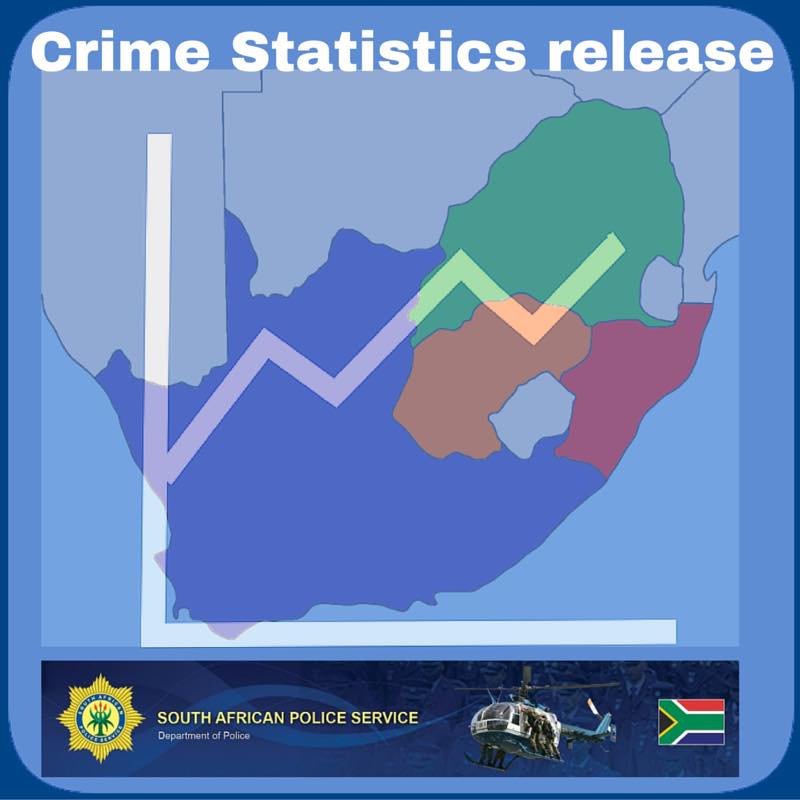
South African ‘Victims of Crime’ Survey Released
Housebreaking and home robbery are the most feared types of crime in South Africa, according to the 2015/16 Victims of Crime Survey. This is despite households experiencing a decline in housebreaking and home robberies from 931 000 incidents in 2010 to 807 000 in 2015/16. The results of the Victims of Crime Survey for 2015/16 were released […]

Housebreaking and home robbery are the most feared types of crime in South Africa, according to the 2015/16 Victims of Crime Survey.

This is despite households experiencing a decline in housebreaking and home robberies from 931 000 incidents in 2010 to 807 000 in 2015/16.
The results of the Victims of Crime Survey for 2015/16 were released by Statistics South Africa on Tuesday. The nationwide household based survey examines perceptions and experiences of citizens in all nine provinces.
The data shows that households in North West, Mpumalanga and the Eastern Cape were the least likely to report incidents of housebreaking and home robbery, while Western Cape and Free State were the most likely to report such incidents to the police.
“When asked about their opinions on crime, households thought housebreaking/burglary and home robberies were the most feared types of crime. This is worrying because it shows that people do not feel safe,” Statistician General Pali Lehohla said.
The report also shows that about 712 000 (2%) of individuals experienced theft of their personal property, while 254 000 (0.7%) experienced assault in 2015/16.
“Despite the good news about the achievements over the last five years, South Africans feel that violent and property crime is increasing to the extent that the majority of households don’t feel safe to walk alone in parks or allow their children to play freely in their neighbourhoods,” Lehohla said.
As a result of fear of crime, households in South Africa take measures to protect themselves and their property.
More than half of the households took physical protection measures for their homes and slightly more than a third of vehicle owners took protection measures for their vehicles.
When asked about what they perceived to be the motive for perpetrators for committing property crimes, Lehohla said more than three-quarters of households in South Africa thought that property crimes were committed because of drug-related motives.
“The perception that drugs were a reason behind the high prevalence of violent and property crime featured predominantly in Eastern Cape with 90.1%, Western Cape with 84.6% and Gauteng with 80.8%.”
Car hijacking most reported crime
The report shows that guns were the most commonly used weapon by perpetrators of car hijackings, home robberies and murder.
With regards to crime reporting, rates varied a lot depending on the type of crime from 95% in the case of murder to 17.3% in the case of crop theft being reported to the police.
Car hijacking was the most reported individual crime, where between 80% and 100% of the incidents were said to have been reported during the reporting period.
On the other hand, there was a sharp decline in reported assault incidents, from 93.3% in 2011 to 48.6% in 2015/16.
Livestock theft reporting also declined from 40.9% in 2011 to 29.3% in 2015/16.
The report indicates that the majority of households did not report crime incidents to the police because they believed the police could not or would not do anything even if they reported.
“These reasons jointly accounted for an estimated 57.2% for theft of personal property, 64.1% for robbery, 23.8% for assault and 24.9% for consumer fraud,” reads the report.
Levels of satisfaction with justice system
With regards to the levels of satisfaction with the police and courts in 2011, an estimated 64.2% of households were satisfied with the police in their area, while about 58.8% were satisfied with the police in 2105/16.
The decline in satisfaction with the police was most severe in the Western Cape, from 71.3% in 2011 to 57.1% in 2015/16.
The report indicates that those who were satisfied with the courts thought that courts passed appropriate sentences, while of those who were satisfied with the police were of the opinion that the police were gender and disability sensitive and tolerant.
There was a decline in household satisfactions with the courts, from 64.5 % in 2011 to 54% in the reporting period. The Western Cape displayed the lowest levels of satisfaction with courts at 32.2%.
Many provinces felt that the courts were too lenient on criminals and it took long for cases to be finalised.
Feeling safe
Despite citizens in all provinces — with the exception of Limpopo — taking less than 30 minutes to get to a police station, the survey provided evidence of a decline in police visibility during the last five years.
From 2011 to 2015/16, a noticeable decline was observed in the percentage of households who felt safe walking alone both during the day or when it was dark, while throughout the period, the majority felt safer walking during the day than in darkness.
Slightly more than a third of households felt safe walking alone in their area.
Corruption
On perceptions of corruption, about 16.4% of the households thought that employment opportunities were the main reasons bribes were solicited. This was followed by policing, traffic fines, social grants, housing and driving licences.
At provincial level, the Free State with 44.7% and KwaZulu-Natal with 44.5%, had the highest proportion of households who thought that people are paying bribes to speed up these processes.
Lehohla said the survey is important as it guides government in formulating its policies in the fight against crime.
“Crime creates anxiety in society and has a negative effect on the quality of life and economic development. In order to achieve the national strategic outcomes on crime, it is important that we measure such patterns and perceptions.”
Source: SAnews.gov.za
